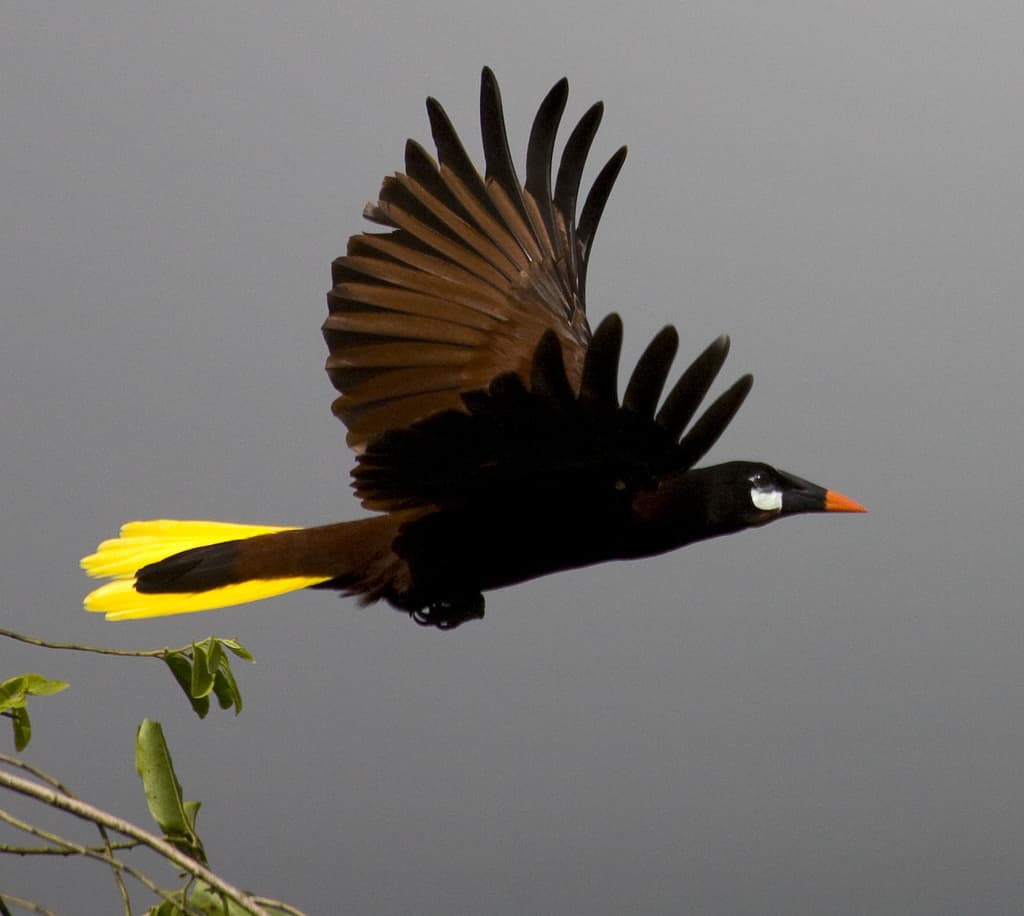When it comes to pointing out animals, some Costa Ricans can be extremely unspecific. Sometimes it seems that all small or rodent-like animals are referred to as zorros (foxes), and most everything else is simply referred to as a bicho. However, the reality is that the Spanish or indigenous American terms for these creatures are nothing short of fascinating. Here’s a glimpse at the amazing lexicon that’s been created for Costa Rica’s wide array of creatures.
1. Montezuma Oropendula (Psarocolius montezuma)
Watch the oropendula mating ritual:
Montezuma oropendulas are known to be lavish when it comes to breeding. Females weave giant hanging structures to nest their eggs, and since the birds breed in colonies, one tree can hold up to 100 nests. But it is the male oropendula’s elaborate breeding display that gives the birds its name.
Before mating, a dominant male completes a complicated series of bows on a tree branch, by leaning far over the branch’s edge, falling forward and swinging back. The swinging motion, combined with the golden underside of the bird’s tail makes the bird resemble a golden pendulum, or oropendula in Spanish.
2. Terciopelo/fer-de-lance (Bothrops asper)
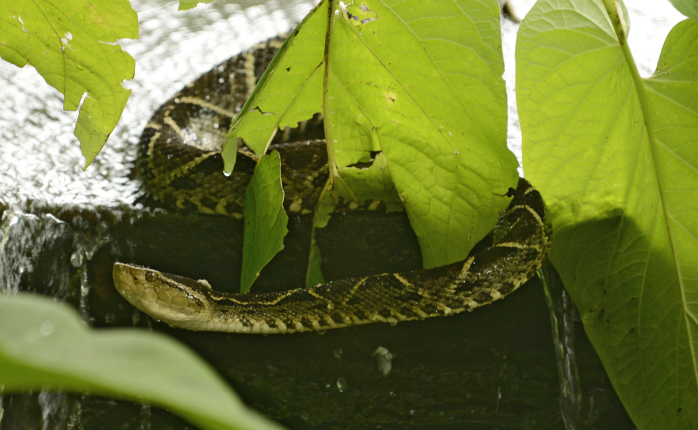
Due to its aggressive behavior and highly toxic venom, the Terciopelo causes more injuries and fatalities than any snake in Costa Rica. In English, the snake is usually referred to by its French name, fer-de-lance, which means “iron of the lance.” Strangely, the Spanish name for this fearsome snake is just about the opposite. The Spanish word terciopelo means velvet, which is a reference to the snake’s soft and silky skin.
3. Serafín del platanar/silky anteater (Cyclopes didactylus)
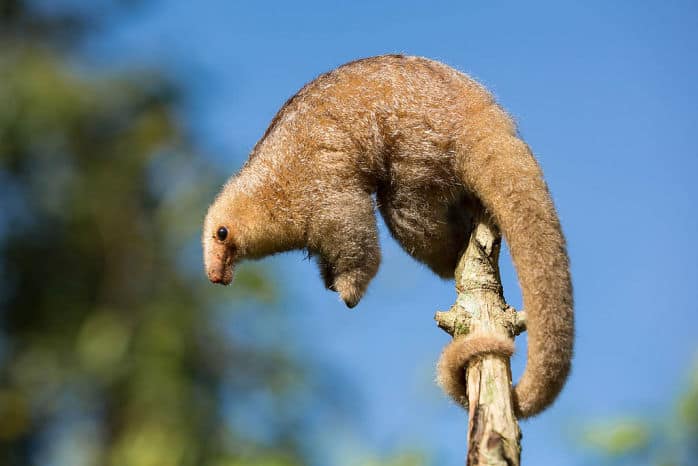
Common in the rainforests of Central and South America, the arboreal silky anteater is the world’s smallest anteater. While its English name refers to its soft fur, the Spanish name, serafín del platanar, is rooted in myth. In both Judaism and Christianity, Seraphs, or Serafín in Spanish, are high-ranking angels. The anteater’s name can be translated to angel of the banana plantation, and is likely a reference to indigenous beliefs that the silky anteater guides the souls of the dead to heaven.
4. Armadillo Zopilote/Northern naked-tailed armadillo (Cabassous centralis)
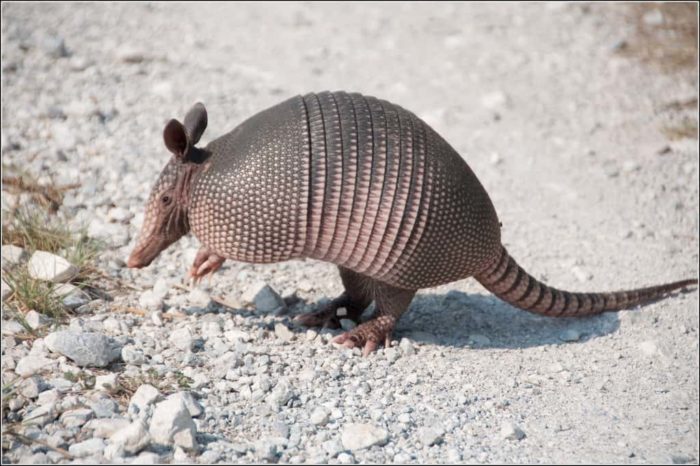
There is something creepy about the Northern naked-tailed armadillo. At least, that’s what indigenous people throughout Central and South America always thought. The armadillo was considered a death omen, and armadillo zopilote translates to buzzard armadillo. Since this armadillo neither looks like a buzzard nor feeds on carrion, its reputation as a harbinger of death is likely the source of the name.
5. Tepezcuintle/Paca (Agouti paca)
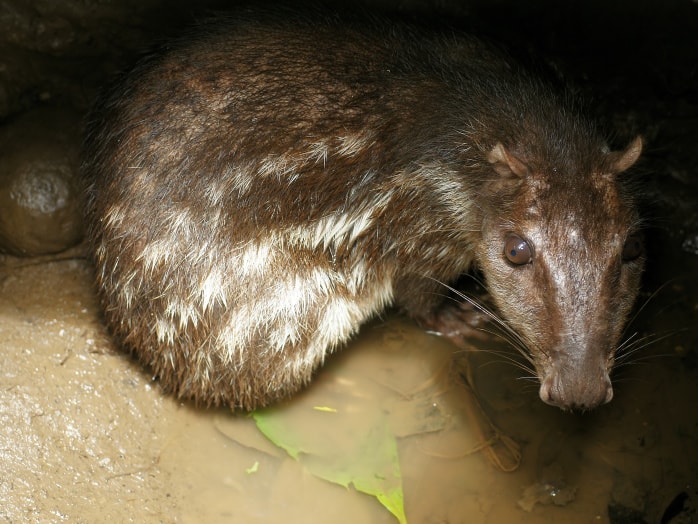
These giant rodents can be found throughout Costa Rica. Though the creature is known under different names it is most commonly referred to as paca in English and tepezcuintle in Spanish. Tepezcuintle comes from the ancient Aztec language, Nahuatl, and means mountain dog.
6. Jaguar (Panthera Onca)
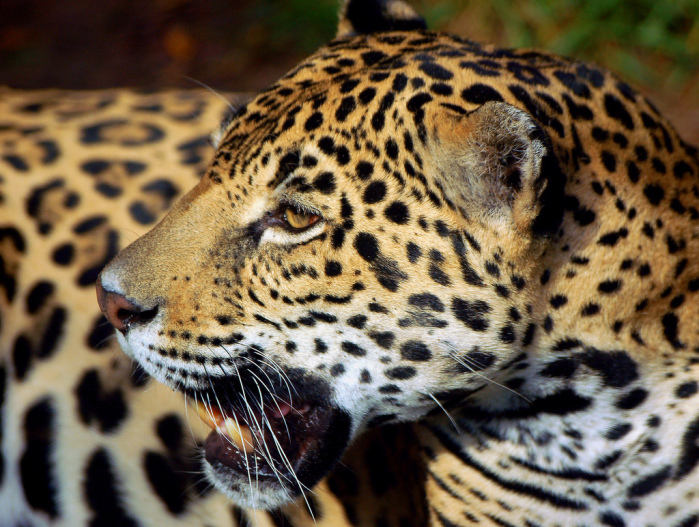
Revered in the mythology of nearly every indigenous group throughout Central and South America, the jaguar is recognized for its strength and stealth. The word jaguar, which is the same in both English and Spanish, comes from the native American word Yaguara, which means pouncing killer.
Read more “Into the Wild” columns here
“Into the Wild” is a monthly wildlife column from photojournalist Lindsay Fend

